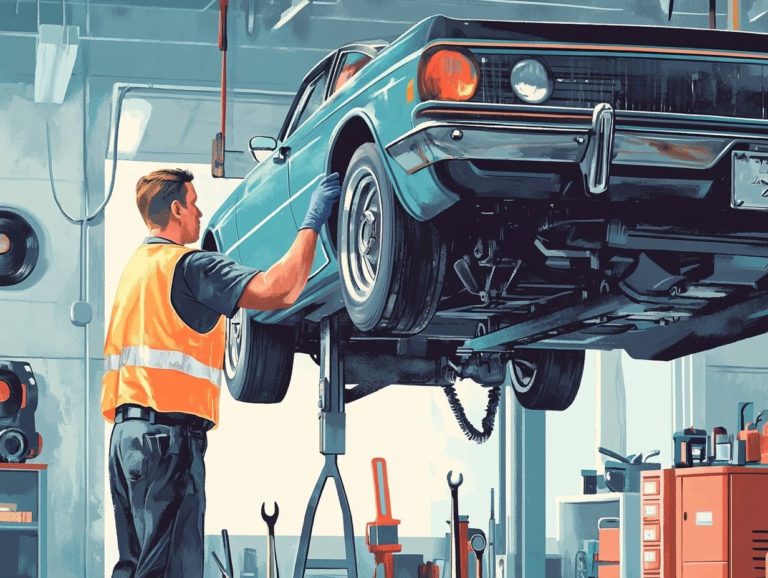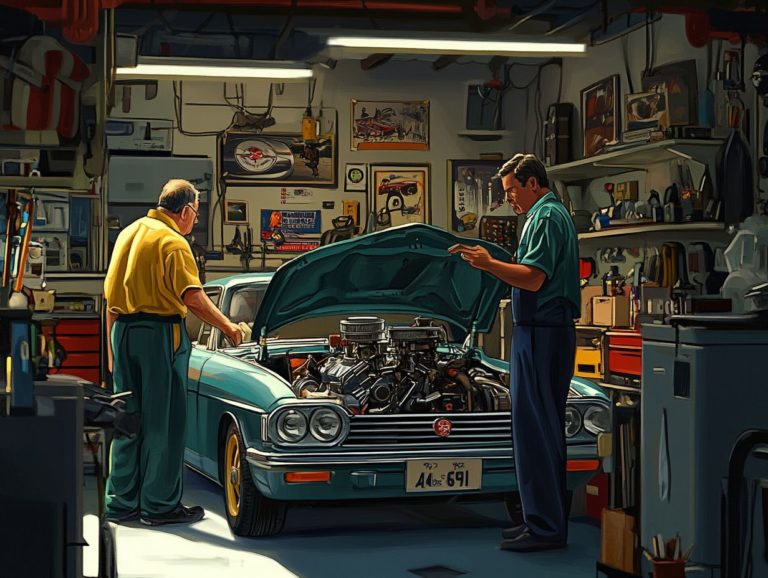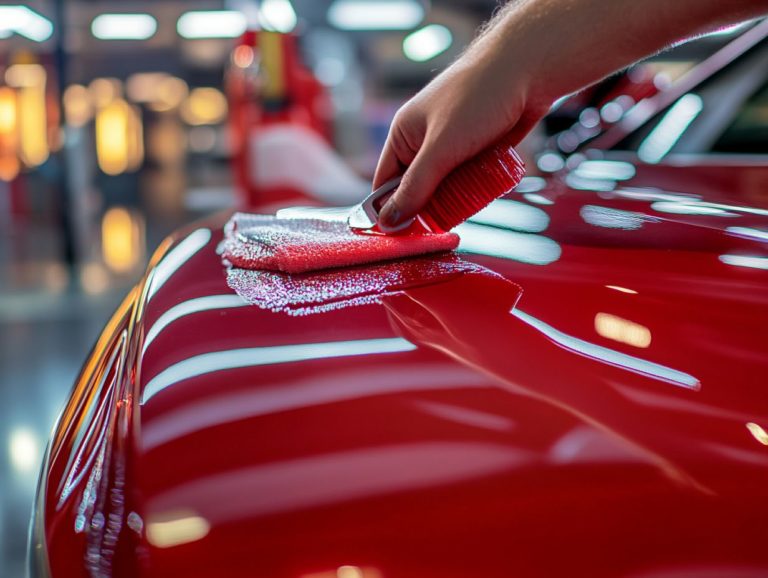5 Important Tips for Car Winterization
As winter approaches, it s essential for you to prepare your car for the cold months ahead. Properly getting your car ready for winter enhances performance and ensures your safety on icy roads!
Here are five crucial tips to get your car ready for winter from checking your tires and brakes to making sure your battery is in top shape. Let s dive into the first step: checking your tires and brakes!
You ll also explore the significance of winter preparation, common winter car problems, and how these straightforward steps can save you money in the long run. So, buckle up and keep your car in prime condition this season!
Contents
- Key Takeaways:
- 1. Check Your Tires and Brakes
- 2. Change Your Oil and Coolant
- 3. Keep Your Car Clean and Free of Salt
- 4. Have Emergency Supplies in Your Car
- 5. Get Your Battery Checked
- What Is Car Winterization and Why Is It Important?
- Frequently Asked Questions
- What are the five most important tips for car winterization?
- Why is getting your car serviced and inspected before winter so important?
- How often should I check my tire pressure during winter?
- Do I need to switch to winter tires?
- Why is it important to keep your gas tank at least half full during winter?
- What emergency supplies should I keep in my car for winter?
Key Takeaways:
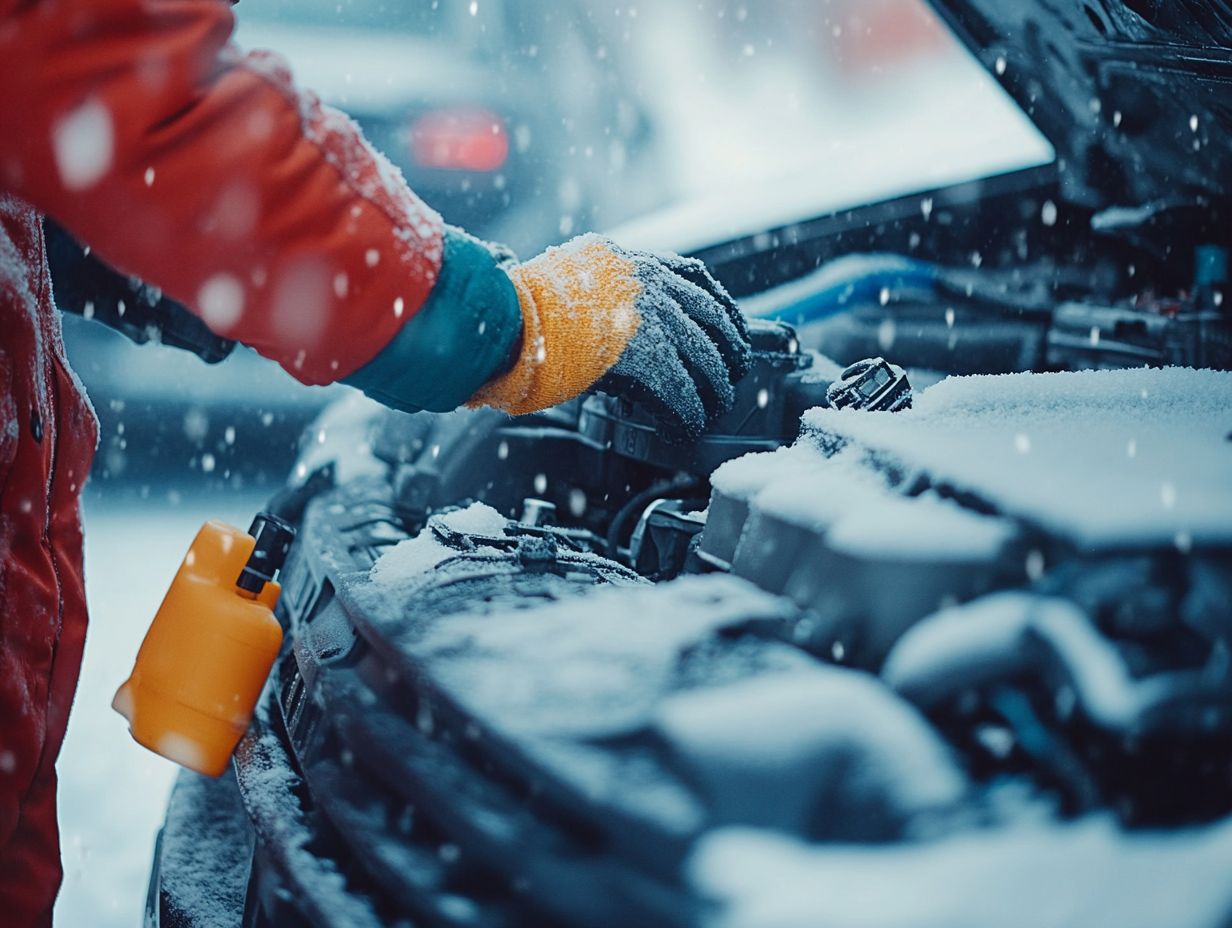
- Regular winter preparation of your car can save you money in the long run by preventing costly repairs and breakdowns.
- Keeping your car clean and free of salt can prevent rust and damage to your vehicle.
- Check your tires, brakes, oil, coolant, and battery before winter to ensure your car is in top condition for safe driving in cold weather.
1. Check Your Tires and Brakes
Properly checking your tires and brakes is paramount for ensuring your vehicle’s safety during winter driving conditions, especially in Canada. Snow tires and sufficient tread depth can dramatically enhance your traction and control on icy roads.
Neglecting to inspect tire pressure or tread depth can expose you to serious safety hazards. Regularly monitor these vital aspects!
A tire’s performance hinges on maintaining the correct pressure, which should typically be checked every month. Ensure your tread depth is adequate to prevent skidding.
It’s prudent to replace your tires when the tread wears down to 2/32 of an inch or less. When selecting the right winter tires, consider factors such as temperature and your driving habits, alongside recommendations for tires specifically designed for snowy terrains. This approach guarantees optimal performance throughout the season.
2. Change Your Oil and Coolant
Changing your oil and engine coolant is essential for keeping your vehicle performing at its best during the harsh winter months. The right antifreeze mixture prevents freezing and ensures smooth operation, allowing you to tackle whatever winter throws your way!
In winter, choosing the right type of oil is just as important. Low-temperature oils, like 0W-20 or 5W-30, offer better fluidity. This makes it easier to start your engine and ensures efficient lubrication. A well-maintained engine coolant system safeguards against potential freezing, which can lead to expensive repairs.
When you ensure these fluids are suited for cold climates, you re gearing up for an exciting winter adventure while boosting engine performance. You’re also protecting vital components, extending their lifespan, and reducing wear and tear.
By prioritizing these key aspects of car maintenance, you can navigate the winter season with confidence and significantly minimize the risk of unexpected breakdowns by following seasonal car maintenance tips.
3. Keep Your Car Clean and Free of Salt
Maintaining a clean car, free from salt buildup, is vital for its longevity and performance during winter driving. Road salt can corrode various components, including window tracks and weather stripping. Neglecting this can lead to costly repairs!
Regularly washing both the exterior and interior of your vehicle ensures that the damaging effects of salt and grime don t compromise sensitive parts. For the exterior, a thorough rinse followed by a wash with the right car soap and a protective wax creates a barrier against harsh winter elements. Don t overlook the interior; vacuuming and wiping down surfaces prevents dirt from settling in and becoming a nuisance.
Pay special attention to battery terminals, as they can attract corrosion. A simple cleaning solution of baking soda and water can keep them in top shape. Lastly, maintaining clear glass surfaces is essential for visibility. Using a quality glass cleaner will help you ensure optimal clarity throughout those snowy months.
Now, don t delay get started on these tips to keep your car safe and ready for winter!
4. Have Emergency Supplies in Your Car
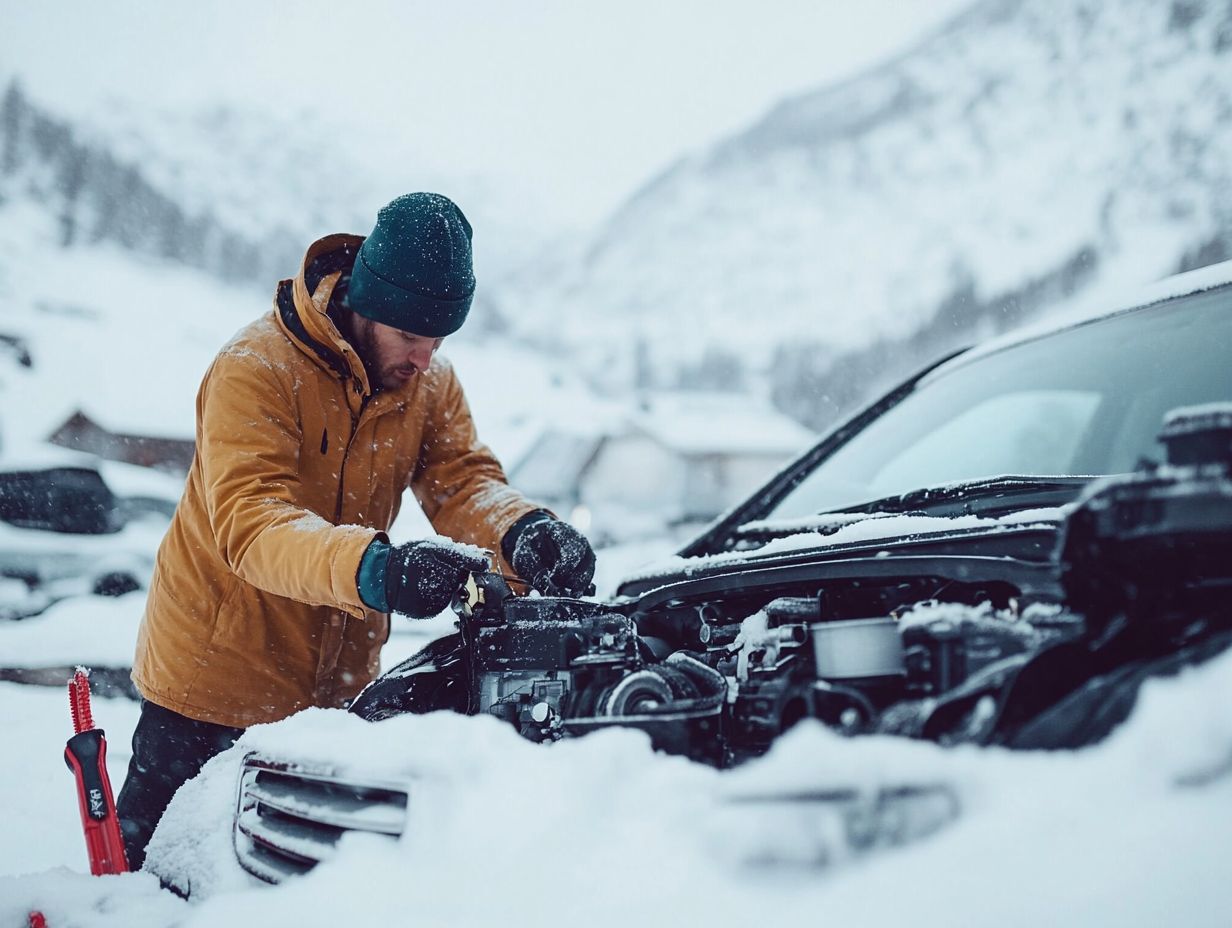
An emergency kit in your car is vital for winter safety! It prepares you for unexpected situations. Ensure it s stocked with vital tools like a shovel, a first-aid kit, and even cat litter to provide extra traction on icy surfaces.
A warm blanket is a must-have if you find yourself stranded in freezing temperatures. A flashlight with extra batteries can illuminate your surroundings when visibility drops. Don t forget your non-perishable snacks and bottled water they’re essential!
Jumper cables and flares are crucial; they re your lifeline for signaling for help and getting assistance.
Being prepared in this way not only saves you time but can also be a true lifesaver when the weather turns nasty. This shows why having a well-stocked emergency kit is crucial.
5. Get Your Battery Checked
Getting your car battery checked before winter is a must! Cold temperatures can really take a toll on battery performance. Ensuring your battery terminals are clean can save you from starting issues when you re out on the road in winter s chill.
Understanding how to test your battery s health is crucial for any vehicle owner. Regularly inspecting for signs of a weak battery like dimming headlights or a sluggish engine crank can help you spot potential problems before they worsen.
It s also smart to perform routine maintenance, such as cleaning the battery terminals to eliminate corrosion that can hinder performance. Checking the connections for tightness guarantees a reliable power flow, minimizing the chance of an unexpected failure.
By making these checks a priority, you can drive with confidence, knowing your vehicle is ready for winter challenges!
What Is Car Winterization and Why Is It Important?
Car winterization is a series of important checks and repairs designed to prepare your vehicle for the challenges of the winter driving season. This is crucial for ensuring your safety, preventing breakdowns, and enhancing performance by using the right antifreeze a liquid that prevents the engine from freezing during cold weather and coolant to combat frigid temperatures.
Check and replace fluids, inspect your tires for adequate tread and pressure, and ensure your battery is in peak condition; cold weather can really take a toll on battery performance. Assess your windscreen wipers and defrosters clear visibility is a must when navigating snowy conditions.
The significance of car winterization can’t be overstated; it protects vital engine components from the harsh winter environment and boosts reliability. For those in the market for a vehicle, knowing tips for buying used cars in winter can drastically reduce the chances of getting stranded in the cold.
What Are the Most Common Winter Car Problems?
During winter, you may encounter several common car problems that can disrupt your driving experience, such as battery failures, coolant leaks, and insufficient traction from worn-out snow tires. These issues threaten your safety and that of other road users, making it crucial for you to take a proactive approach!
For instance, colder temperatures can adversely affect battery performance, leading to unexpected failures. Regularly testing your battery and ensuring clean connections can significantly reduce this risk. Watch for leaks in the coolant system; it can prevent overheating and potential engine damage, particularly since antifreeze mixtures tend to break down over time.
Investing in quality winter tires and ensuring they are properly inflated can greatly enhance your traction and control on icy roads, making for a safer driving experience.
How Often Should a Car Be Winterized?
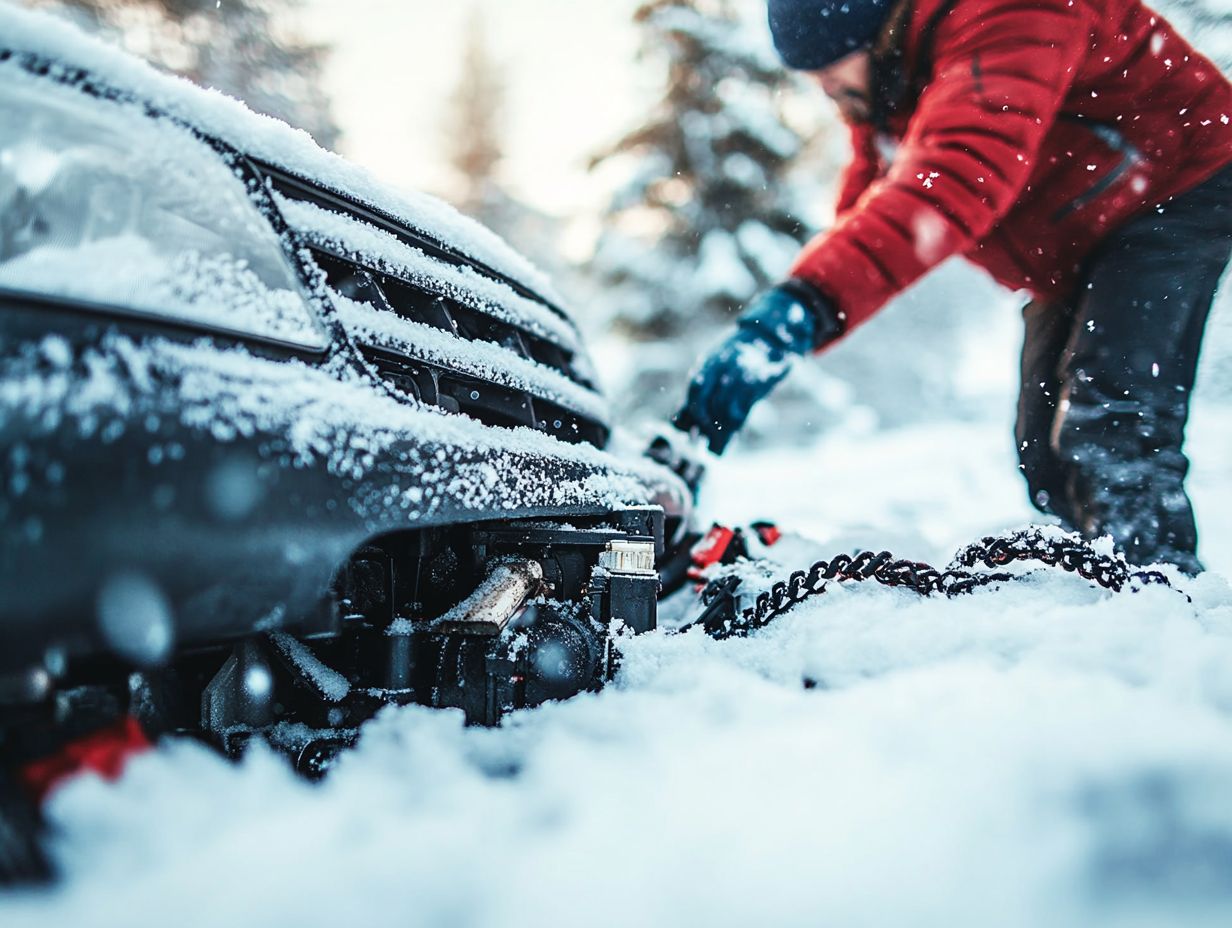
To ensure optimal performance and safety, you should winterize your car at least once a year preferably right before winter driving conditions hit. This proactive measure addresses maintenance issues before they escalate.
Winterizing your car is essential for your vehicle’s longevity and your peace of mind when braving harsh weather. It’s important to know how to maintain your car during winter and watch for signs indicating immediate maintenance needs, such as:
- Unusual noises from the engine
- Difficulty starting the vehicle
- Fluid leaks that could signal more serious problems
Schedule winterization checks in late fall as cooler temperatures settle in. This preparation positions you well for the challenges of snow and ice. By keeping a watchful eye on these indicators, you can ensure a smoother driving experience throughout winter.
What Are the Benefits of Regular Car Winterization?
Regular car winterization offers numerous benefits, including enhanced safety on icy roads, improved vehicle performance, and a reduced risk of breakdowns. To learn more about how to handle common winter car repairs, it’s vital to incorporate this into responsible car maintenance during colder months.
Taking time to winterize your vehicle prepares it for harsh weather and minimizes the likelihood of costly repairs in the future. Proper preparation like checking antifreeze levels (the liquid that prevents your engine from freezing), inspecting belts and hoses, and ensuring tire tread depth is crucial for maintaining your vehicle’s health. These steps can extend the lifespan of critical components, leading to less frequent maintenance.
Investing in winterization is a strategic move in car care. It prioritizes safety and financial efficiency throughout the chilly season.
How Can Winterization Save You Money in the Long Run?
Regular car winterization can save you a significant amount over time. It minimizes maintenance costs, prevents expensive repairs, and extends your vehicle’s lifespan, making it crucial to follow tips for maintaining older vehicles to help you avoid costly breakdowns during frigid winter months.
By prioritizing proactive maintenance, you can dramatically lower the chances of unexpected repairs that disrupt your routine and lead to hefty financial burdens. A well-maintained vehicle keeps you rolling smoothly and can even earn you favor with insurance providers, possibly resulting in lower premiums and savings over time.
Consistent upkeep offers immediate financial benefits and boosts your vehicle’s overall value, making it more appealing should you decide to sell or trade it in in the future. These efforts create a smoother driving experience and grant you peace of mind, knowing you re well-prepared for whatever the road throws your way.
Frequently Asked Questions
What are the five most important tips for car winterization?
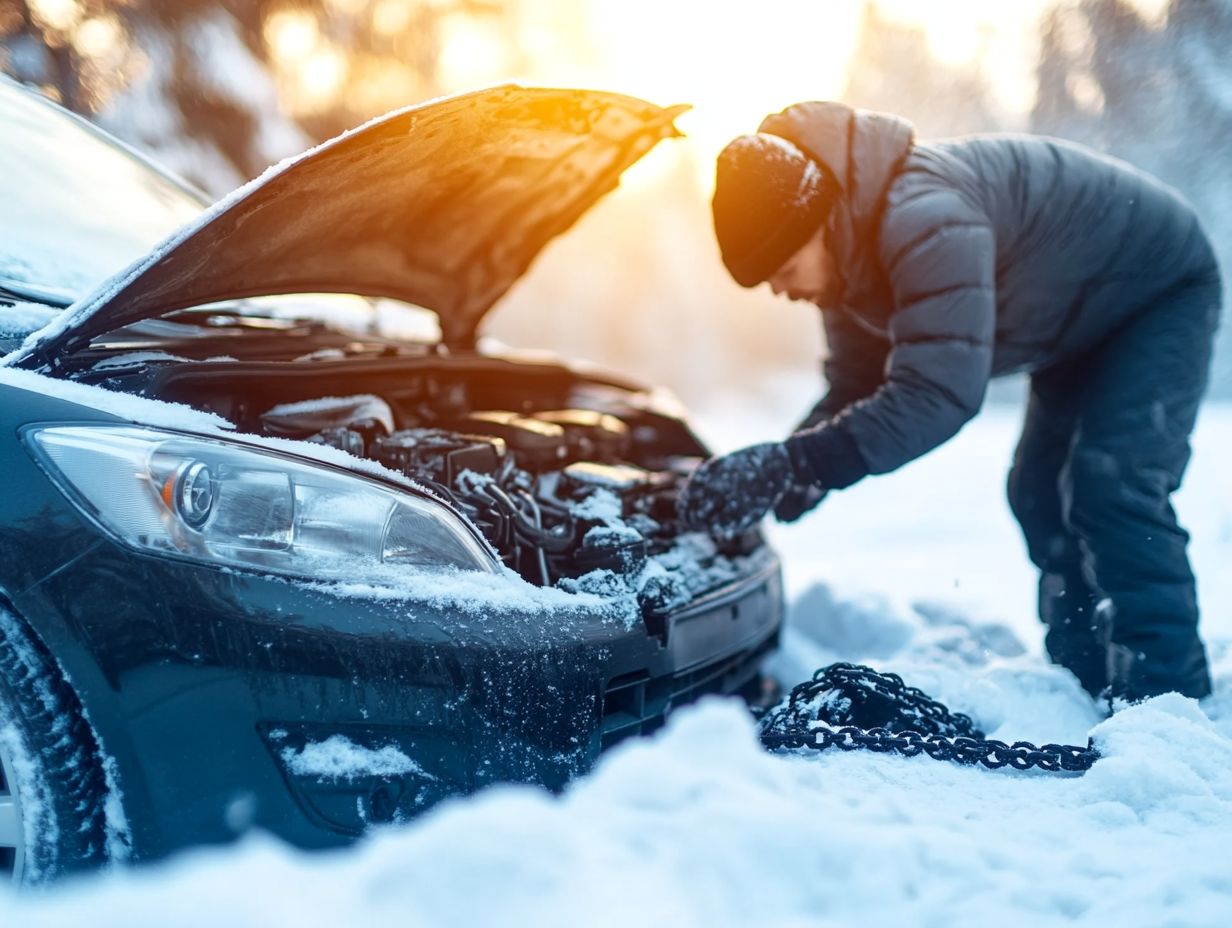
The five most important tips for car winterization are:
- Get your car serviced and inspected before winter begins
- Check your tire pressure regularly
- Switch to winter tires if necessary
- Keep your gas tank at least half full
- Stock your car with emergency supplies
Why is getting your car serviced and inspected before winter so important?
Getting your car serviced and inspected before winter is crucial. It allows a mechanic to identify potential issues that could arise during the colder months, helping to prevent breakdowns and costly repairs.
How often should I check my tire pressure during winter?
You should check your tire pressure at least once a week during winter. Cold temperatures can cause tire pressure to drop, which affects your car’s handling and fuel efficiency. Keeping your tires properly inflated is essential for safe winter driving.
Do I need to switch to winter tires?
If you live in an area with heavy snow and ice, switching to winter tires is highly recommended. These tires provide better traction and handling, making them necessary for safe driving in winter.
Why is it important to keep your gas tank at least half full during winter?
Keeping your gas tank at least half full prevents your fuel lines from freezing in extreme cold. It also ensures you have enough gas for unexpected delays or emergencies.
What emergency supplies should I keep in my car for winter?
Essential emergency supplies include a first aid kit, blankets, a flashlight, extra warm clothing, non-perishable snacks, and a snow shovel. A portable phone charger and jumper cables are also crucial if your battery dies in cold weather.



